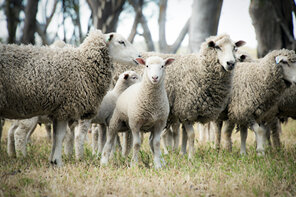
Toxoplasmosis (Toxoplasma gondii) is one of the most common causes of contagious abortion in sheep.
Symptoms of the Disease/Condition.
Toxoplasmosis is so common that it is a case of when an abortion outbreak will occur –not if.
T. gondii is basically everywhere and can infect almost all warm-blooded animals, including humans.
It is a zoonosis!
The life cycle involves cats as intermediate hosts and they are the main source of infection on farms. An Intervet survey shows that 80% of MA ewes throughout NZ have been exposed to toxoplasma infection. Feral cats are difficult to see on farms but they are much more common than most people think.
T.gondii infection in non-pregnant animals is generally unnoticeable. Infection must occur during pregnancy to cause lamb losses.
Most abortion outbreaks start off slowly so farmers tend to ignore the occasional aborting ewe. The rate then starts to increase to a level at which farmers become concerned and want to know what’s going on.
Abortion outbreaks and their impact on lambing performance are very obvious. However, Toxoplasmosis has the potential to cause significant sub-clinical losses associated with early embryonic death (shows as increased dry rate at scanning) and decreased lamb survival. Lambs can be born dead or alive at normal term. The lambs look normal and live ones are weak and struggle to get up and get a good feed of colostrum.
The source of infection is feral cat faeces: their litters excrete many millions of very resistant Toxoplasma oocysts on concentrated feed, hay, and bedding. When the hay is fed out to cattle during the winter months, the pasture becomes contaminated and grazing sheep can become infected.
Diagnosis for all causes must be based on samples collected from at least 6 freshly aborted foetuses and when possible the accompanying placentae.
The presence of antibodies in foetal heart blood (as long as ewes have not been vaccinated) means seroconversion by the lamb during pregnancy. This does not prove the lamb died from toxoplasmosis. It does imply the disease must be present which means in future years that flock will be exposed to a risk that may be manageable.
Cost/Impact on Herd/Farm Revenue.
Nationally, lamb wastage during pregnancy is only 1-2% and many abortions are nature’s way of getting rid of genetic rubbish.
Around 3-5% of NZ flocks will experience a significant abortion outbreak every year. While some flocks may only incur low losses, the introduction of an infectious agent to naive sheep may induce a very significant abortion storm with up to 30% of ewes aborting. In a 2500 ewe flock lambing 130% when lambs are worth $50 lost income could be as high as $48,750.
Management and Control.
Reducing the population of feral cats and therefore the primary source of infectious organisms on the property is difficult.
A single Toxovax vaccination provides lifelong protection. The vaccine cost is approx $2.25/dose (excl. GST). The annual investment spread over 4 lambings is approx $56 per 100 ewes so the programme only needs to save a single lamb per 100 ewes mated to get a return.